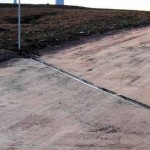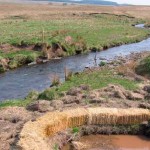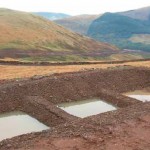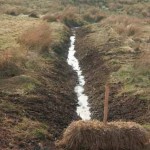“Good practice during windfarm construction” is a document produced by several Scottish agencies (Scottish Renewables, Scottish Natural Heritage, and the local Environmental Protection Agency and Forestry Commission).
It provides several useful advices on wind farm construction, based on the experience they gained with the development of several pretty big projects (for instance Whitelee W.F., with 140 WTGs, 86 Km of roads and 940 Km of cables).
The document is based in a northern Europe environment, where many roads are on peat and heavy precipitations are expected. Here the main points of the documents:
- They suggest designing the drain for a 1:200 year event and the use of pre-earthworks drainage (a solution seldom used in dry countries).
- Regarding the shape of the ditches, they explain the differences between “V” shaped ditches (they maintain more the vegetation, but they have more erosion) and “U”shaped ditches (they allow easier access and egress to wildlife).
- Considering that many times internal road are built without camber to allow the use a narrow truck crane, they propose the use of a series of cross-drain to divert the flow to the side ditches.
- Several techniques are suggested as protection measures: silt traps, silt fencing, straw bales, settlement lagoons or even the use of flocculant.
- They explain that cable trenches can act as a water drainage route, so in case of strong gradients clay plugs and impermeable barriers should be used to limit water flow.
- They recommend not to install MV cables in soft peat, because they sink adding tension and potentially breaking.
Last but not least, there is a detailed explanation of floating tracks (road construction on peat using geotextile or geogrid). The suggestions are:
- To build them only in flat areas, to avoid the risk of a slip or circular failure.
- To leave vegetation and tree roots in place, and lay the geogrid directly on the existing terrain.
- To avoid leaving open trenches or drainage ditches in the proximity, because the cyclic loads due to truck passage can lead to a soft materials migration and collapse of the road.
If you are interested you can download the entire document here: Good practice during windfarm construction




Leave a Reply